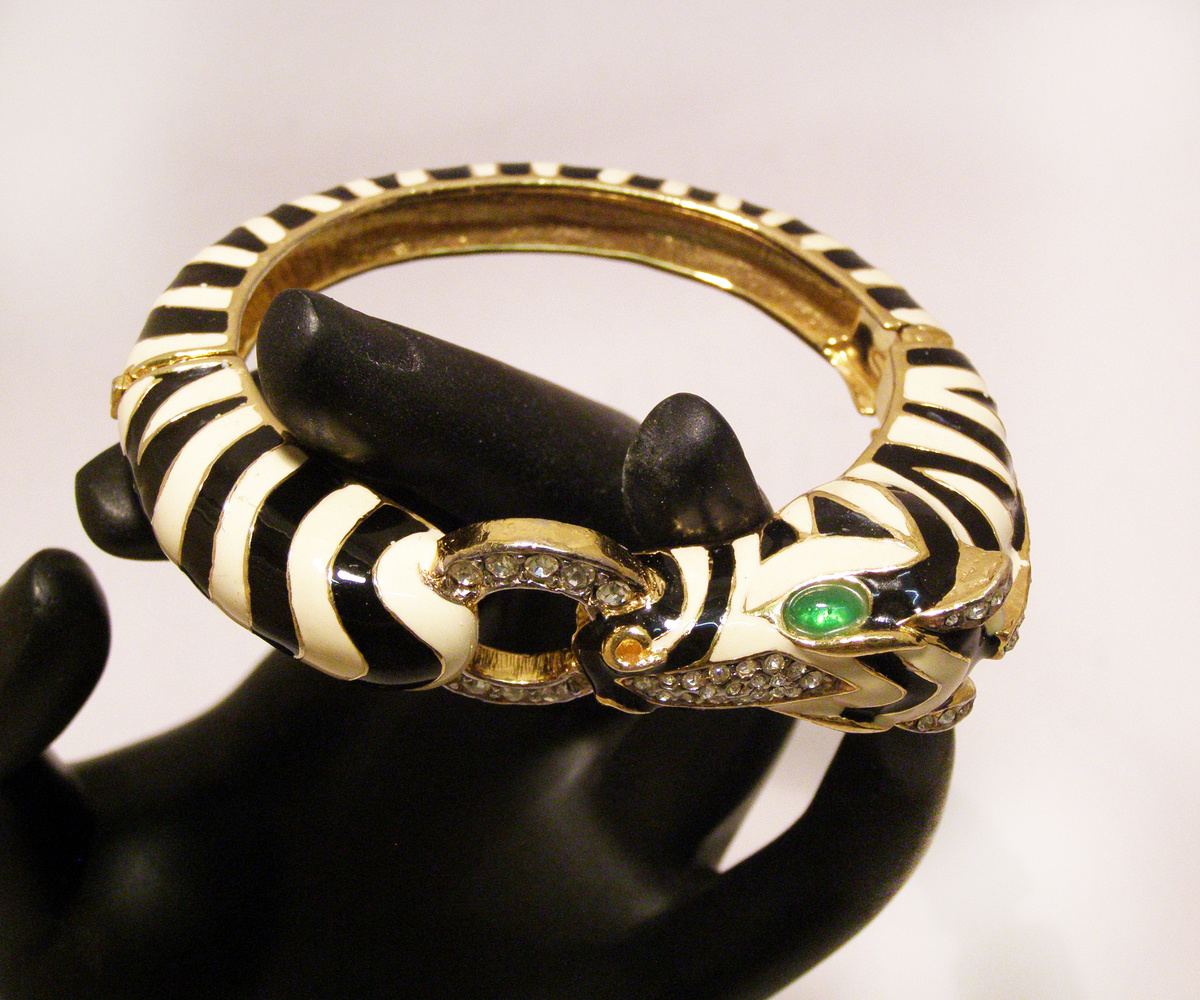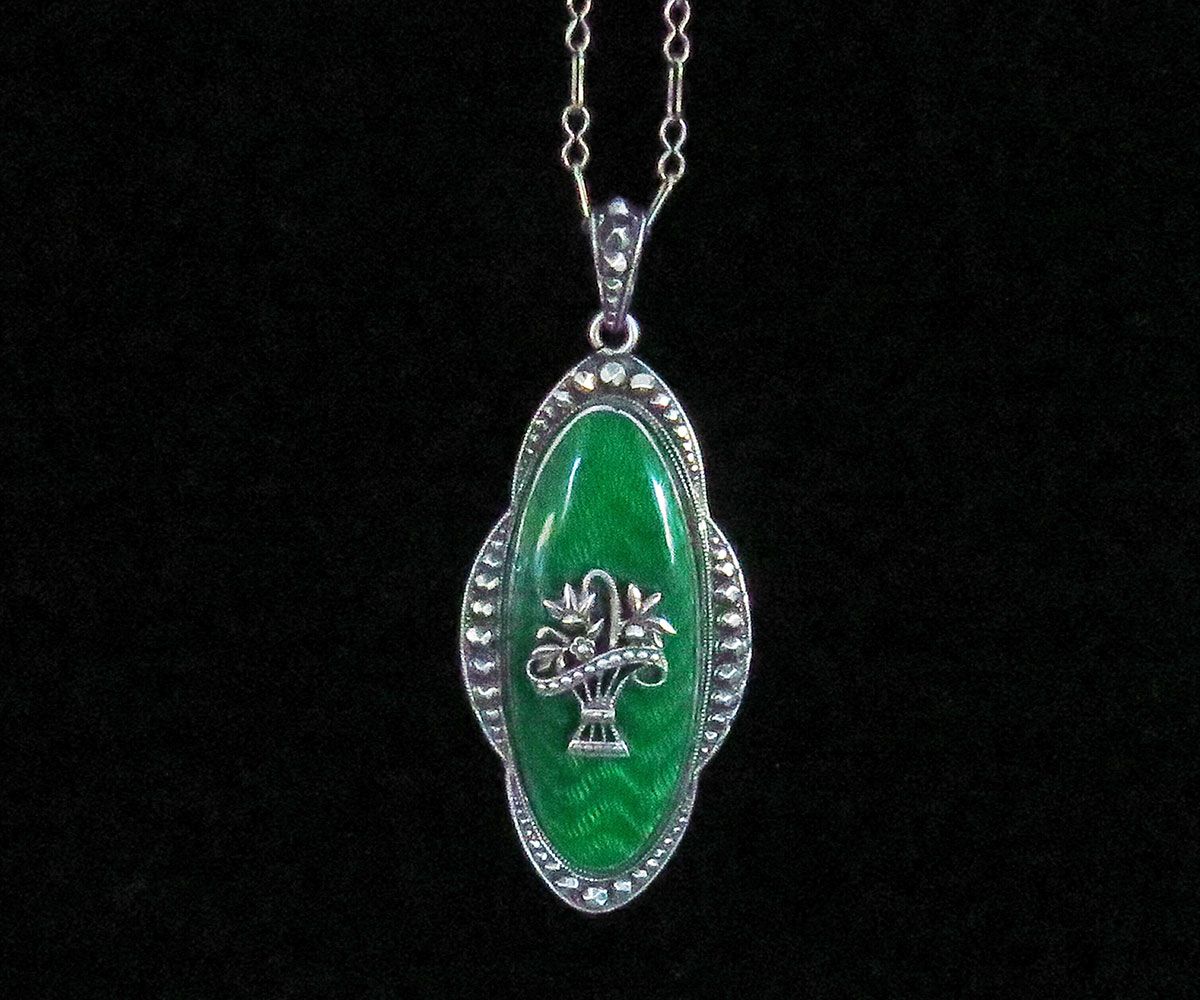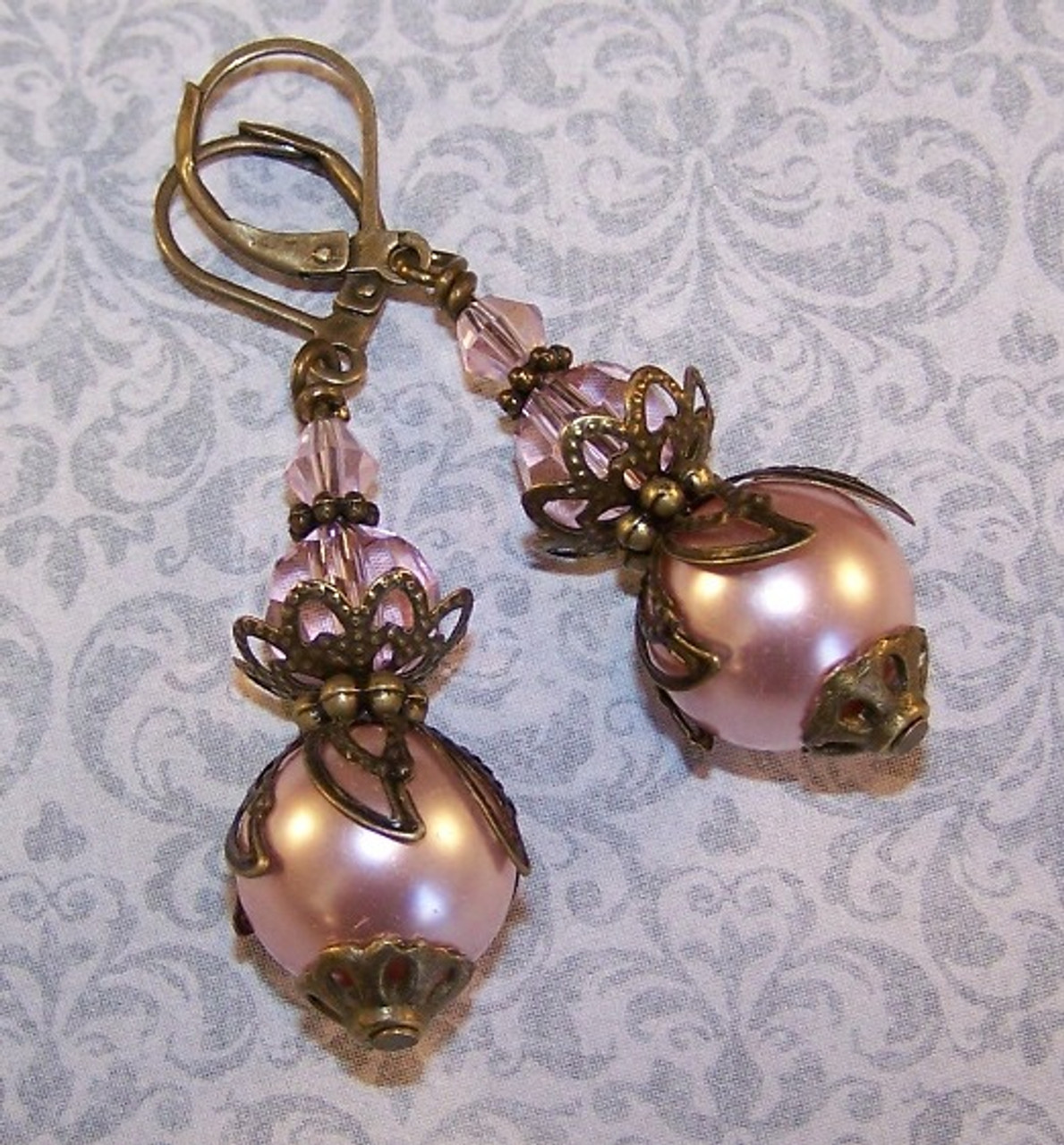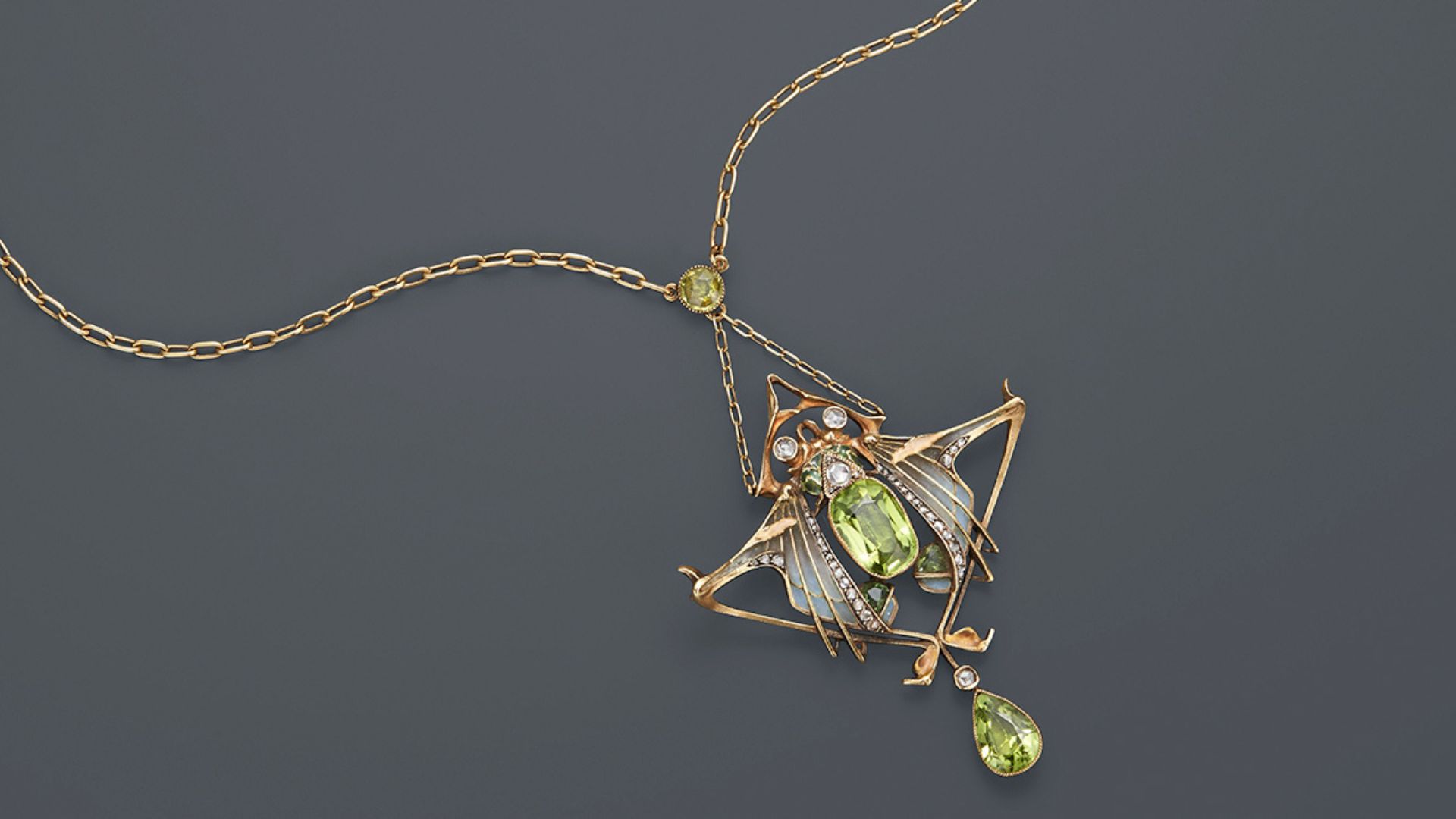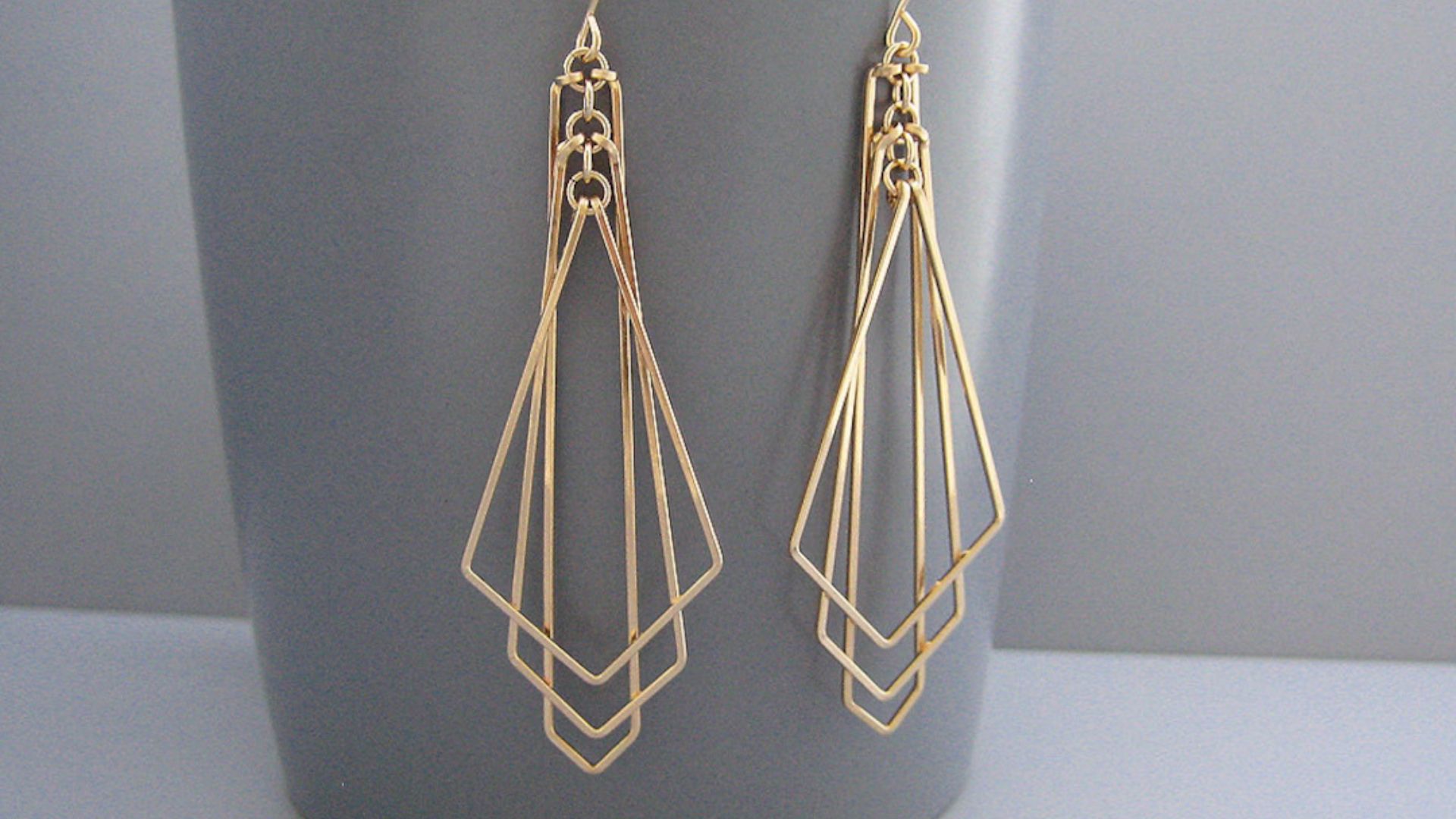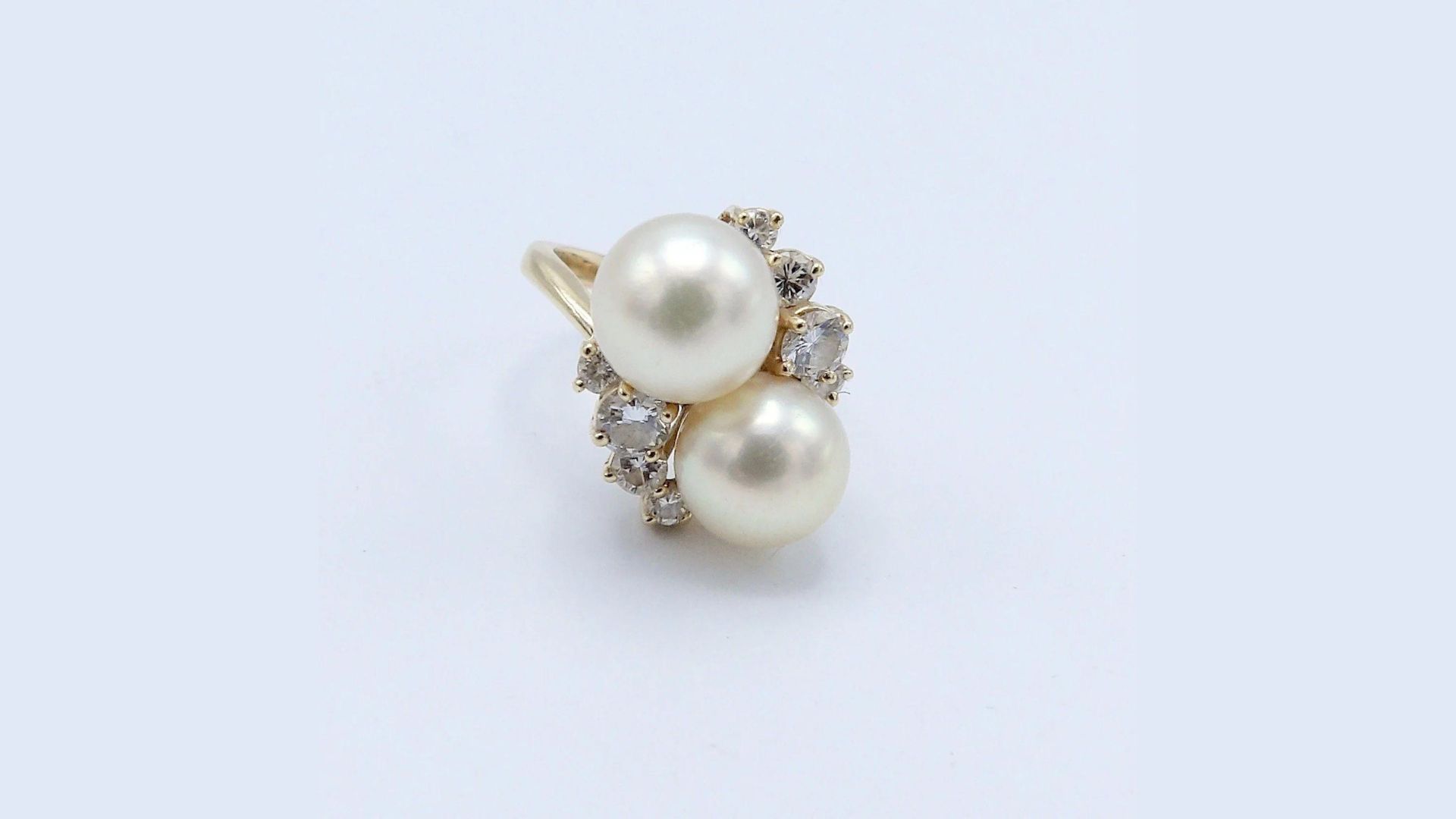Enamel vintagejewelryrefers to jewelry items that incorporate the use of enamel as a decorative element, and these items are typically from a bygone era, often datingback several decades or even centuries.
Enamel is a material made by fusing powdered glass with a base material, such as metal, using high heat. It can be applied in various colors and patterns to create intricate and vibrant designs on jewelry pieces.
The Ancient Art Of Enameling - A Brief History
The ancient craft of enameling requires great expertise. The brilliance and variety of enamel methods come from microscopic glass particles attached to metal with intense heat. Read on to discover about enamel's history, processes, and uses.
The Celts in the 3rd century, Byzantium, Renaissance Italy, 13th-century China, 16th - 17th-century Japan, and Limoges, France used enamel. Ceramics is flexible and adaptable to many styles. Clocks, snuffboxes, compacts, vases, canes, teapots, fine art, and jewelry can be decorated with enamels, which are suitable for many jewelry metals.
A Glimpse Into The Origins
Enameling's roots extend back millennia, tracing its origins to civilizations of the ancient world. One of the earliest recorded uses of enamel dates back to ancient Egypt, where it adorned pottery and jewelry. However, the technique's true potential began to unfold in the Roman Empire.
Roman craftsmen mastered the art of enameling, producing exquisite pieces showcasing this medium's beauty and versatility. The enameling process involved fusing powdered glass onto metal surfaces, creating vibrant colors and intricate designs. The enameling techniques developed by the Romans laid the foundation for centuries of innovation and creativity.
Enameling Across Cultures
As enameling techniques spread across the world, different cultures infused their unique aesthetics and traditions into the craft. In Byzantine culture, enameling found a prominent place in the creation of religious icons and artifacts. The Byzantines elevated enameling to a form of religious devotion, using it to adorn their most sacred treasures.
Moving further into history, the Islamic world embraced enameling with its characteristic flair for intricate geometric patterns and calligraphic designs.
Enamel work became an essential element in the embellishment of weaponry, jewelry, and architectural elements. The delicate artistry of Islamic enameling continues to inspire artists and collectors to this day.
Enameling In Medieval Europe
The Medieval period witnessed enameling's revival in Europe. Monasteries and cathedrals became centers of enameling craftsmanship, with religious artifacts and reliquaries adorned in vibrant enamel.
The intricate work on chalices, crosses, and ecclesiastical objects not only served a religious purpose but also displayed the artisan's skill and devotion.
During the Renaissance, enameling experienced a renaissance of its own. European courts prized enamel jewelry for its vivid colors and detailed designs. These pieces were symbols of wealth and status, with royals and nobles donning enamel jewelry to display their affluence and taste.
The Intricate Craftsmanship Behind Enameling
Enameling, an ancient and intricate art form, continues to captivate and inspire with its meticulous craftsmanship. This section explores the fascinating world of enameling, exploring the various techniques, tools, and skills that artisans employ to create these exquisite pieces of jewelry.
The Foundation - Selecting The Base Metal
The journey of enameling begins with the careful selection of a base metal. Artisans choose metals like gold, silver, or copper, as they provide a sturdy foundation for the delicate enamel work that will adorn the jewelry. Each metal offers unique qualities, allowing artisans to create different textures and effects.
Gold, with its malleability and resistance to tarnishing, is a preferred choice for fine enameling work. Silver provides an excellent contrast with enamel colors and is favored for its affordability. Copper, often used in cloisonné enameling, offers a warm and vibrant background for the enamel.
The Enameling Process Unveiled
Enameling is a meticulous and multi-step process that requires precision and patience. It involves the application of powdered glass, known as enamel, onto the prepared metal surface. This process is achieved through a variety of methods, including.
- Cloisonné- Artisans create compartments on the metal surface by affixing thin wires to it. These compartments, called cloisons, are then filled with different colors of enamel, separated by the wire boundaries. The piece is then fired to melt and fuse the enamel, resulting in a vibrant and intricate design.
- Champlevé - Artisans carve or etch depressions into the metal surface, creating areas to hold the enamel. Excess enamel is carefully removed, leaving a smooth surface with colorful designs.
- Plique-à-jour - This method resembles stained glass. Enamel is applied to a metal framework without a backing, allowing light to shine through the piece. The result is a delicate and translucent effect reminiscent of a stained glass window.
The enameling process involves multiple firings in a kiln at precise temperatures, with each layer building upon the previous one. This meticulous approach ensures that the enamel adheres securely to the metal and achieves the desired depth of color and texture.
Tools Of The Trade
Craftsmen who practice enameling rely on an array of specialized tools to bring their creations to life. Some of the essential tools include.
- Kiln - The kiln is the heart of the enameling process, where the magic happens. It provides the controlled environment necessary to heat the metal and enamel to the precise temperatures required for fusion.
- Sifting Tools - These tools are used to evenly distribute enamel powder onto the metal surface. They ensure a consistent layer of enamel, crucial for achieving uniform color and texture.
- Sgraffito Tools - Artisans use these tools to scratch or etch fine details into the enamel surface. Sgraffito allows for adding intricate patterns and designs, enhancing the overall visual appeal.
- Enamel Brushes - Fine brushes paint delicate details and blend enamel colors. Artisans use brushes to achieve precise lines, shading, and gradients.
- Firing Tools- These tools, such as trivets and firing forks, are essential for safely placing and removing pieces from the kiln during the firing process.
Exploring The Diverse Styles Of Enamel Vintage Jewelry
Enamel vintage jewelry is a treasure trove of artistic styles and design movements that have left an indelible mark on the world of adornment.
In this section, we will journey through time to discover the captivating styles that have defined enamel vintage jewelry over the years.
Victorian Splendor
The Victorian era, spanning the reign of Queen Victoria from 1837 to 1901, gave rise to a distinctive style of enamel vintage jewelry. This period is characterized by romanticism, sentimentality, and a penchant for intricate designs. Enamel jewelry from the Victorian era often features delicate and ornate patterns, including floral motifs, lover's knots, and forget-me-nots.
Lockets were especially popular, with enamel adorning the surface to create sentimental keepsakes. Mourning jewelry, a unique subset of Victorian enamel jewelry, featured dark colors and somber designs to commemorate loved ones.
Its enamel jewelry beautifully reflects the Victorian era's fascination with symbolism and sentimentality, making it highly collectible and sought after.
Art Nouveau's Whimsy
The Art Nouveau movement, which flourished from the late 19th century to the early 20th century, brought fresh air to enamel vintage jewelry. Characterized by its celebration of nature, flowing lines, and sensual curves, Art Nouveau enameling was a departure from the meticulous details of the Victorian era.
Art Nouveau enamel jewelry often featured organic motifs such as flowers, insects, and women with flowing hair. Using pastel colors, iridescent enamels, and the plique-à-jour technique (resembling stained glass) allowed artisans to create pieces that appeared ethereal and dreamlike. The whimsical and otherworldly nature of Art Nouveau enameling continues to captivate collectors with its unique blend of elegance and fluidity.
Art Deco's Bold Geometry
The Art Deco movement, which rose to prominence in the 1920s and 1930s, brought a bold and geometric aesthetic to enamel vintage jewelry. Characterized by clean lines, sharp angles, and a fascination with technology and modernity, Art Deco enamel jewelry embraced a different design philosophy.
Enamel pieces from this era often featured striking color contrasts, bold patterns, and sleek, streamlined designs. Geometric shapes, such as rectangles, triangles, and circles, were prevalent.
The use of black and white enamel, along with bold primary colors, created a sense of visual dynamism and sophistication. Art Deco enamel jewelry is a reflection of the rapid societal changes and the optimism of the Roaring Twenties, making it a timeless and highly collectible style.
Mid-Century Modern Elegance
The mid-20th century brought another shift in enameling styles, reflecting the aesthetics of the time. Mid-century modern enamel jewelry is characterized by simplicity, minimalism, and a focus on sleek lines and abstract designs.
During this period, enamel pieces often featured enamel-on-copper designs with clean, bold lines and vibrant, contrasting colors. Designers experimented with abstract and asymmetrical shapes, giving enamel jewelry a sense of artistic innovation. The focus was on creating pieces that were both elegant and wearable, reflecting the evolving tastes and lifestyles of the post-war era.
Preserving Enamel Vintage Jewelry
Enamel vintage jewelry, with its delicate beauty and historical significance, deserves special attention when it comes to preservation and care. In this section, we will explore the essential steps and techniques to ensure the longevity of these precious pieces, allowing them to continue enchanting generations to come.
Understanding Enamel's Vulnerabilities
To effectively preserve enamel vintage jewelry, it's crucial to understand the vulnerabilities of this delicate material. Enamel is essentially a form of glass fused onto metal, and like glass, it can be susceptible to damage from various factors:
- Impact - Enamel is fragile and can chip or crack upon impact. Avoid dropping or knocking enamel jewelry against hard surfaces to prevent damage.
- Heat- Excessive heat can cause the enamel to melt or discolor. Avoid exposing your enamel jewelry to high temperatures, such as direct sunlight or open flames.
- Chemicals- Harsh chemicals, including those found in household cleaning products and cosmetics, can damage enamel. Avoid contact with chemicals and remove enamel jewelry before using such products.
- Ultrasonic Cleaners- Ultrasonic cleaners, often used for jewelry cleaning, can be too harsh for enamel and may cause it to loosen or crack. Stick to gentler cleaning methods.
Safe Storage
Proper storage is essential to protect enamel jewelry from damage and deterioration. Here are some guidelines for safe storage.
- Individual Wrapping- Store each piece of enamel jewelry separately in soft, acid-free tissue paper or pouches. This prevents pieces from scratching or chipping against each other.
- Avoid Direct Sunlight- Enamel colors can fade when exposed to direct sunlight for extended periods. Store your jewelry in a cool, dark place away from sunlight.
- Climate Control - Extreme temperature fluctuations and humidity can affect enamel. Maintain a stable environment to prevent damage. Use desiccant packets or silica gel in your storage containers to control moisture.
- Anti-Tarnish Strips - Place anti-tarnish strips or tabs in your storage containers to help prevent tarnishing of any metal components in the jewelry.
Cleaning And Maintenance
Cleaning enamel jewelry requires a gentle touch and minimal intervention. Here's how to clean and maintain your enamel pieces.
- Dust Removal - Use a soft, lint-free cloth or a soft brush to remove dust and debris from the jewelry. Avoid using abrasive materials that can scratch the enamel.
- Mild Soap and Water - For more thorough cleaning, prepare a solution of lukewarm water and a mild, non-abrasive soap. Dip a soft cloth or a cotton swab into the solution and gently clean the enamel surface. Rinse with clean water and pat dry with a soft cloth. Ensure that no soap residue remains on the jewelry.
- Avoid Soaking - Do not soak enamel jewelry in water, as prolonged exposure to moisture can damage the enamel.
- Ultrasonic Cleaners- While ultrasonic cleaners are generally not recommended for enamel if you must use one, ensure that it is specifically designed for use with delicate jewelry and follow the manufacturer's instructions carefully.
- Clean it properly - Don't use any household chemicals to clean enamel! Avoid damaging it with strong household cleaners by using tepid water, a soft cloth, and Windex or hand soap.
- Avoid accident-prone areas- Many individuals prefer to decorate their dressers with jewelry. Anything may knock the jewelry off and fall, therefore, that's a bad habit. Keeping a valuable item up high risks shattering it since enamel fractures on heavy impact.
FAQs
What Does Enamel Do To Jewelry?
Jewelry metal is coated with enamel. It is applied as a paste or powder and heated to above 1500 degrees to fuse the metals with the powder, producing a vibrant covering that metals alone cannot achieve.
What Are The Different Types Of Enamel Jewelry?
Enamelling styles include cloisonné, champlevé, and plique-à-jour. Raku's shooting goes another way. Beading and wire-working combine with torch-fired enamel beads.
What Distinguishes Art Deco Enamel Vintage Jewelry From Other Styles?
Art Deco enamel vintage jewelry is characterized by bold geometric shapes, sharp angles, and vibrant color contrasts, reflecting the modernist spirit of the 1920s and 1930s.
How Can Collectors Identify The Age Of Enamel Vintage Jewelry?
One way to identify the age of enamel vintage jewelry is by examining the clasps and fastenings, which have evolved, with specific styles associated with different eras.
What Is The Significance Of Plique-à-jour Enamel In Vintage Jewelry?
Plique-à-jour enamel, often likened to stained glass, allows light to shine through the piece, creating a delicate and translucent effect that uniquely charms vintage jewelry.
Conclusion
The world of enamel vintage jewelry is a captivating tapestry of history, craftsmanship, styles, and preservation. Enamel vintage jewelry, with its rich heritage and enduring charm, serves as a testament to the artistry of its artisans and the evolving tastes of different eras.
From the intricate designs of the Victorian era to the whimsical beauty of Art Nouveau, the bold geometries of Art Deco, and the minimalist elegance of mid-century modernism, enamel vintage jewelry showcases a diverse range of styles that continue to enchant collectors and enthusiasts.
